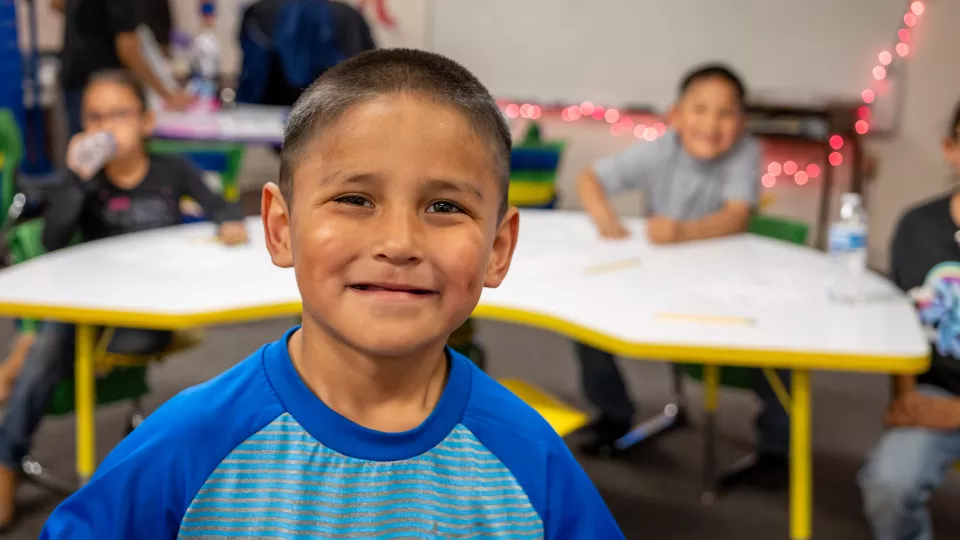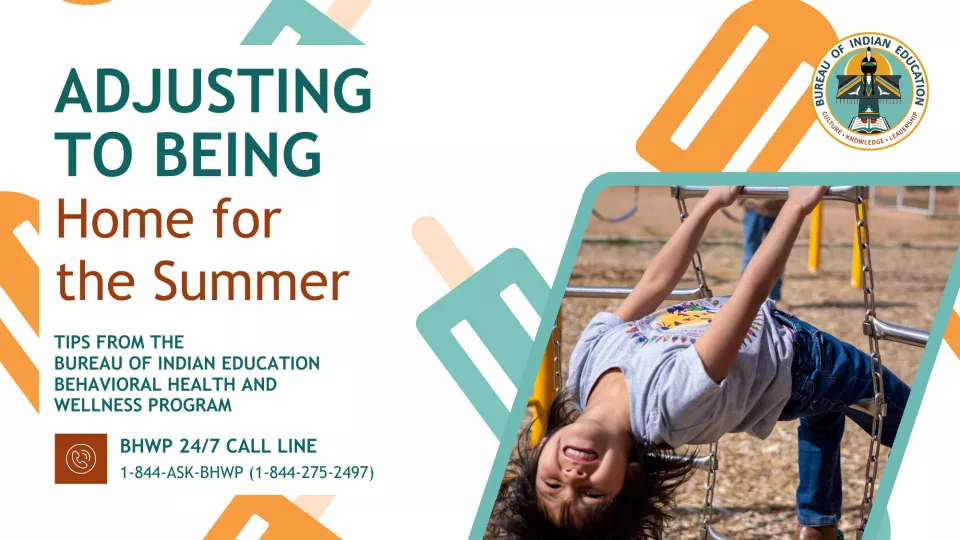
The Bureau of Indian Education is committed to providing every student with a culturally relevant, high-quality education. As staff gear up for the academic year with lesson planning and professional development, parents and guardians can take steps at home to help their children transition back to school successfully.
Family Involvement and Preparation
- Familiarize Yourself with the Route: Walk, drive, or ride your child's route to school.
- Discuss Safety: Talk to your children about avoiding strangers.
- Review School Policies: Understand the early arrivals, late pick-ups, and bus transfer rules.
- Visit the School: Take a tour to help your child acclimate.
- Connect with Teachers: Introduce yourself to your child’s teacher and inquire about their preferred communication methods.
- Learn the Digital Systems: Familiarize yourself with the school’s digital learning platforms and notification methods.
Learning and Academics
- Establish Homework Routines: Prioritize homework as a daily habit. Create a quiet, consistent space for your child to work without distractions.
- Encourage Engagement: Show interest in and praise your child’s efforts.
- Read Together: Spend 20 minutes daily reading with your child, starting this routine before school begins and continuing throughout the year.
Holistic Wellness
Teresia Paul, the Bureau of Indian Education’s student health program specialist for its Behavioral Health and Wellness Program, emphasizes the importance of a supportive environment for effective learning.
“To get the most out of the school day, students need to feel safe and supported,” she said. “If students are not feeling physically, mentally, emotionally, spiritually or socially, it will be nearly impossible to focus on their schoolwork and engage with others.”
She recommends establishing quick daily check-ins in the morning and evening, which can help Improve your child’s self-confidence and smooth the transition into the new school year:
- Morning Check-In: Keep it positive and brief. Ask:
- What are your hopes for today?
- What is one new thing you want to try?
- How will you make someone smile today?
- Evening Check-In: Reflect on the day with questions like:
- What is one thing you could have done differently?
- What surprised you today?
- What brought you joy today? Who made you smile?
For resources on bullying prevention, including cyberbullying, visit StopBullying.gov. BIE students and staff can access the Behavioral Health and Wellness Program resources, including the 24/7 Call Line for immediate individual crisis support at 1-844-ASK-BHWP (1-855-275-2497).
Health and Nutrition
Health and nutrition include maintaining a balanced diet and exercise, a regular sleep schedule, limiting screen time, and keeping up to date with the U.S. Center for Disease Control and Prevention’s 2024 vaccination and immunization schedules.
BIE National Nutrition Consultant U.S. Public Health Service Commissioned Corps Lt. Cmdr. Casey Cavanaugh creates balanced meals with MyPlate.gov.
“It is important to ensure students are well rested, have healthy meals, and engage in plenty of physical activity so they can show up ready to learn,” she said.
Lt. Cmdr. Cavanaugh’s Tips for Eating More Fruits and Vegetables:
- Serve Vegetables with Each Meal: Get creative, like cucumber sticks with sandwiches.
- Avoid Unhealthy Foods: Snack on veggies before dinner instead of junk.
- Start the Day Well: Have a healthy, high-protein breakfast.
- Eat Breakfast and Lunch at School: BIE meals meet National School Lunch Program requirements.
Contact
Office of Communications
Bureau of Indian Education Central Office
U.S. Department of the Interior
1849 C Street NW, MIB-3610
Washington, DC 20240
Telephone: 202-941-0789
Email: biecommunications@bie.edu





